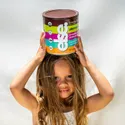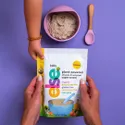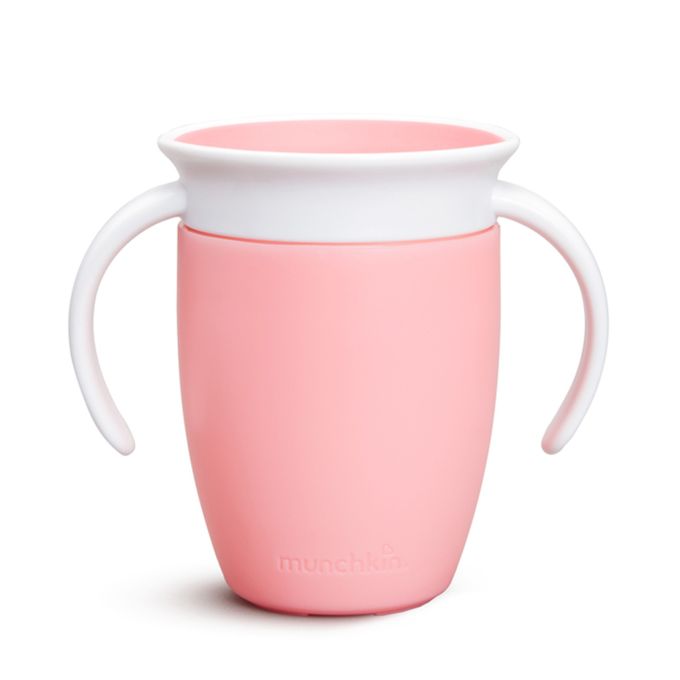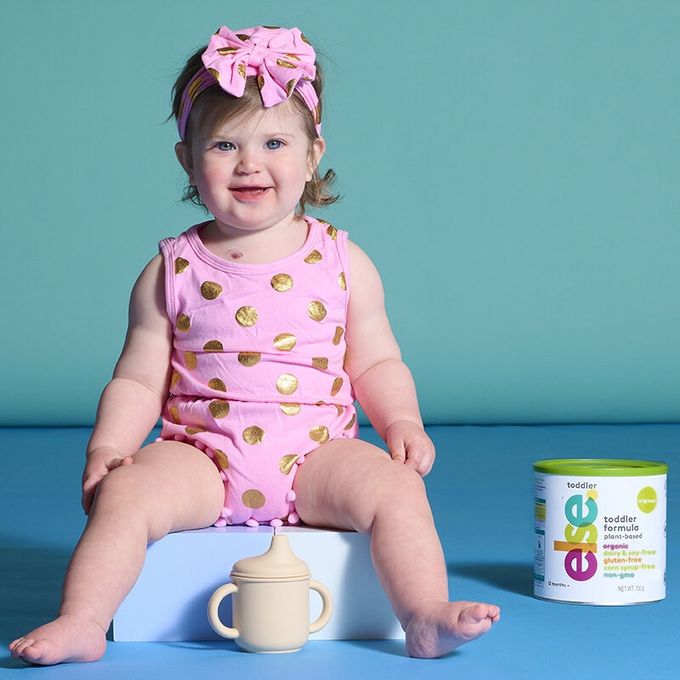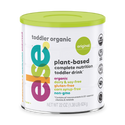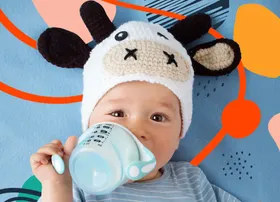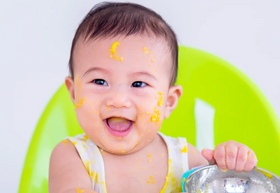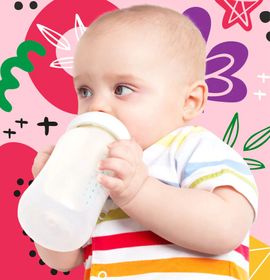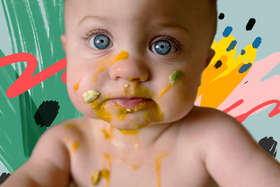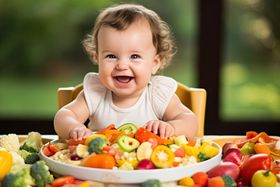When Should Baby Be Completely Off Bottle? Transitioning to Cups and Solids
Published June 5, 2024
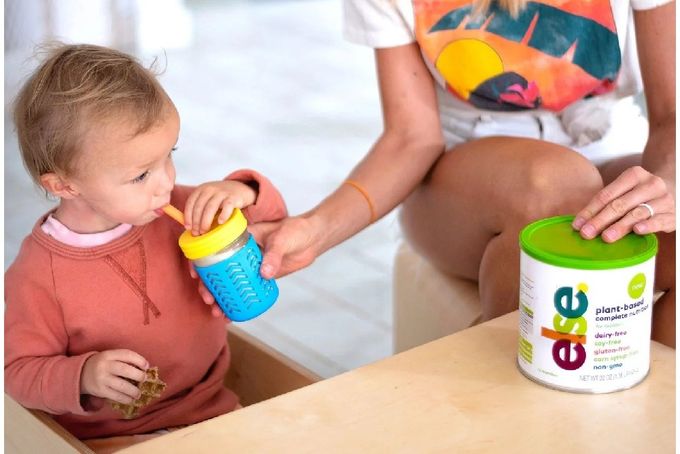
Determining “when should baby be completely off bottle” is a significant milestone in early childhood development. Parents often ask when to initiate this change to ensure it aligns with their child’s health and readiness. Typically, the switch from bottle to cup should start around 12 months, with most children fully transitioning by 18 months to avoid potential issues with dental health and to support the development of healthy eating patterns. This article will guide you through the process, offering expert advice on recognizing readiness, establishing a routine, and nurturing independence when it comes to the question of when should baby be completely off bottle.
Key Takeaways
Start nudging your baby off the bottle around 12 months and aim to wrap it up by 18 months to prevent dental issues and promote healthy eating habits.
Spot readiness for weaning when your baby can sit up independently and shows interest in food, then introduce solids and swap bottle feeds for sippy cups incrementally.
Foster independence by offering a variety of cups, using consistency in routines, and tackling challenges with patience, comfort objects, and setting examples at mealtime.
Optimal Timing for Bottle Farewell
When it comes to waving goodbye to the bottle, timing is everything. Just as you wouldn’t rush a toddler’s first steps, you shouldn’t hurry the weaning process. The American Academy of Pediatrics (AAP) suggests starting the transition by 12 months and wrapping it up by 18 months. Why the rush, you ask? Well, sticking to the bottle beyond this golden window can lead to tooth decay and may throw a wrench in the development of healthy eating habits. Like setting an alarm for the morning bottle, it’s about creating a feeding schedule that aligns with your child’s developmental needs and health recommendations.
Now, if you’re cuddling with your bottle-loving tot, wondering if it’s time to start, remember this: the goal isn’t to snatch the bottle away but to replace it with new, exciting ways of bottle feeding that support their growth. It’s about transitioning that morning bottle into a morning adventure with a sippy cup, and that nighttime bottle might soon involve an open cup instead of a bottle.
Identifying Readiness Signals
So, what are the signs that your little one is ready to swap the bottle for a sippy cup? Imagine your baby, sitting up in their high chair, eyes wide with curiosity at the sight of your dinner plate. That’s a green light! When babies can sit up independently and start eyeballing your spaghetti like it’s the eighth wonder of the world, that’s your cue. And when they reach out for a taste of your mashed potatoes, you know they’re ready for more than just liquid lunches.
Think of it as a developmental treasure hunt—each new sign is a milestone, a precious gem telling you that your baby is ready to explore the world of drinks beyond breast milk and formula. These readiness signals are your map to the treasure of healthy eating habits, and boy, is it a rewarding journey!
The Role of Solid Foods in Weaning
Let’s now explore how solid foods play a part in this weaning journey. Introducing solids around 6 months is like adding a new character to the story of your baby’s diet. It’s exciting, it’s fresh, and, most importantly, it sets the stage for weaning off the bottle. As these foods become a regular part of their diet, the need for breast milk or infant formula starts to wane like the last stars at dawn.
And as your little one begins to sit independently, shovel spoonfuls of pureed carrot into their mouth, and establish mealtimes, you’ll know they’re gearing up for the next act—saying adieu to the bottle. It’s not about taking something away; it’s about enriching their world with textures and flavors that will pave the way for a lifetime of healthy eating.
So, when is the right time to start weaning? The moment your baby shows you they’re ready for the culinary stage.
Establishing a Weaning Schedule
Charting a course for weaning demands a carefully crafted plan—one that comfortably fits your baby, just like their knitted booties. Here’s how to do it:
Start by phasing out that morning bottle over a week, whisking them straight to a scrumptious breakfast instead of offering milk in a cup.
With a feeding schedule that feels like second nature, you can begin to replace one bottle feeding at a time with a sippy cup filled with their usual milk or formula.
It’s a bit like swapping out training wheels for a balance bike—one step at a time.
Imagine your tot’s feeding routine as a series of baby steps. You’ll want to start with their least favorite bottle feed—maybe that’s the afternoon bottle—and swap it with a sippy cup or a snack. Then, like a gentle breeze, give them a few days to adjust before you set sail to the next bottle. Repeat this weekly, and soon, you’ll find yourself celebrating the last bottle’s farewell without a single tear shed—well, at least from your baby.
Gradual Reduction vs. Cold Turkey
Consider weaning as a dance—it’s most effective when executed with patience and grace. For most babies, a gradual transition from bottle to cup is the golden ticket to a stress-free weaning experience. This method, akin to slowly dimming the lights before bedtime, allows your baby’s body to adjust to the change in milk production. It’s about taking the time to savor the last few moments of bottle feeding, one gentle sway at a time, as you wean baby from the bottle.
And while the “cold turkey” approach might work for some, it’s often less of a waltz and more of a tango—quick and intense. So, unless your family’s calendar is clear of any moving days or big events, stick to the gradual approach. Begin by swapping a daytime bottle feed with a sippy cup when your baby seems least interested in their old bottle buddy, as a way to break the bottle habit.
It’s the weaning dance, and you’re leading the way!
Consistency and Routine in Weaning
The strength of routine cannot be overstated! It forms the bedrock of a triumphant weaning process, as pivotal as your bedtime lullabies. Consistency in feeding routines is like the steady drumbeat that guides a marching band—it keeps everything in sync and moving forward. By maintaining the same rhythm each day, your baby knows what to expect, and the transition from bottle to cup becomes as smooth as silk.
Imagine your weaning strategy as a series of familiar melodies, each one signaling a different part of the day. With a consistent feeding schedule, you’re not just teaching your baby to sip from a cup; you’re setting the foundation for healthy habits that will last a lifetime. So, keep the beat going, and before you know it, your little one will be marching to the beat of their own drum, sans bottle.
Transition Techniques: Bottle to Cup Mastery
Eager to conquer the bottle-to-cup switch? Begin by presenting a sippy cup when your little one is around six months, just as they start to explore the realm of solid foods. Think of it as adding a new instrument to their orchestra of eating utensils. By providing the familiar taste of their usual formula or breast milk in the new cup, you’re crafting a sense of continuity in their ever-changing world.
But why stop at just one type of cup? Introduce an assortment, from sippy to open cups, to give your baby a taste of diversity early on. And remember, the best way to teach is by example. Show them how to drink from a cup and watch as they mimic your every move with their own little cup in hand. It’s not just about drinking; it’s about learning a new skill, and your baby is ready to be the star pupil.
Selecting the Right Cup
Let’s now discuss cup selection. It’s akin to picking the perfect pair of shoes for your baby’s first steps—comfort and functionality take precedence. Health experts recommend sippy cups without valves, as they promote sipping rather than sucking. Introduce a sippy cup with water at mealtime, and you’ll soon see your tot sipping with gusto.
Look for a cup that’s as easy to grip as their favorite toy, with features like:
snap-on lids
two handles
straws
soft or hard spouts
cups that transition to open cups
You’re creating a toolkit for your child’s drinking development, so variety is your friend.
The right cup isn’t just a vessel for liquids; it’s a stepping stone to independence.
Encouraging Independence
On the subject of independence, it’s an ideal moment to let your little one take control—of their cup, in this instance. Allowing your baby to hold their own cup is like watching them take their first solo steps; it’s a leap towards self-reliance. Place a cup next to the water dispenser and encourage them to serve themselves, just as they might at a royal tea party.
Celebrate their triumphs, no matter how small, and shower them with praise as they progress from bottle to cup. Trust your instincts and your baby’s cues, and remember that patience is a virtue during this transition. With each successful sip, they’re not just learning to drink independently; they’re also sipping on the sweet nectar of self-confidence.
Overcoming Common Bottle Weaning Challenges
However, even the most seamless paths encounter hurdles, and the weaning journey isn’t an exception. Starting early with bottle weaning can pave the way for a smoother ride, as babies may be more adaptable and less attached to their bottle. And like any team effort, consistency across all caregivers ensures a unified front, making the transition easier for your little one to understand and accept.
Some strategies to help your child let go of their bottle or pacifier include:
Gradually reducing the amount of time they spend with it each day
Introducing a comfort object, such as a stuffed animal or blanket, to replace the bottle or pacifier
Offering praise and rewards for going without the bottle or pacifier
Providing extra comfort and attention during times of change or stress
Being patient and understanding, as it may take time for your child to adjust
By following these strategies and providing love and support, you can help your child transition away from their bottle or pacifier.
When Baby Insists on the Bottle
What do you do when your baby clings to their bottle like a shipwrecked sailor to a lifebuoy? Offer an alternative source of comfort, like cuddling or a treasured stuffed animal. Extra love and attention can go a long way in easing the transition. And if you’re up for a little magic, introduce the concept of a “Bottle Fairy” who whisks away bottles to give to newborns, leaving behind a shiny new sippy cup.
But remember, habits like non-nutritive suckling on pacifiers or water bottles may persist, as they’re a source of comfort for your child. It’s all about gentle guidance and providing alternatives that soothe without fostering old habits. With the right approach, your baby will soon be toasting to their newfound cup expertise.
Managing Nighttime Weaning
Nighttime weaning is a unique chapter in the weaning story, often filled with a bit more drama and a few more tears. For breastfed children over 12 months and formula-fed infants over 6 months, night weaning is a sign that they’re getting enough nutrition during the day. Start by gradually reducing the duration of nightly feedings, like slowly turning down the volume of a bedtime lullaby.
If you’re dealing with larger nighttime feeds, consider trimming down the baby breast milk volume over a week to ease your baby into the new nighttime script. Replace those late-night feeding sessions with comforting routines that don’t involve breastfeeding. It’s about creating new nighttime associations, like a bedtime story or a cuddly lullaby, that signal it’s time to sleep without a bottle in sight.
Nurturing Healthy Drinking Habits Post-Bottle
After bidding the final adieu to the bottle, it’s time to foster lifelong healthy drinking habits. Offer plain water at mealtime and in between meals to quench your child’s thirst without the added sugars of milk or juice. Tap water, especially if it contains fluoride, is like a shield for your child’s teeth, helping to prevent decay.
But as you venture into this new territory, remember to limit the intake of milk and juice. These drinks, while nutritious in moderation, come with sugars that can lead to cavities if consumed in excess. By the time your child turns 2 or 3, aim to transition them to drinking from a cup without a lid, ushering in the era of mature drinking skills. This is about more than just staying hydrated; it’s about setting the stage for a healthy relationship with food and drink.
Introducing Cow's Milk
As for introducing cow’s milk, the timing holds as much importance as the opening note of a symphony. Wait until your child is 12 months old, and then bring in the whole milk with a grand crescendo. Gradually pour it into their diet, like adding a new melody to a familiar song.
Stick to whole milk for older children until they’re at least five years old, as younger ones need the extra calories that skimmed milk just doesn’t provide. Teach your child to associate milk with mealtimes and not as a constant companion like their old bottle friend. It’s about creating healthy habits, making every calorie count in a growing child’s diet, and ensuring they get more milk during these crucial years.
Setting an Example at the Table
As with any good habit, children learn best by example. So, take a seat at the table and make sure you’re sipping on water during meals, showing your little one that it’s the beverage of choice. It’s like inviting them to a grown-up party and letting them mimic the host—you! By drinking from a cup alongside your child, you’re not just teaching them how to drink; you’re also teaching them mealtime etiquette.
Modeling proper mealtime behavior extends beyond just drinks. It’s about staying seated at the table, not wasting food, and keeping mealtime activities structured. These are the tunes that will compose the soundtrack of your child’s eating habits—melodies that they’ll carry with them as they grow. So, set a good example, and watch as your child follows in your footsteps, one sip at a time.
Summary
As the last page of this weaning story turns, let’s look back at the journey we’ve shared. From the first signs of readiness to the final sip from an open cup, we’ve navigated the winding path of weaning with patience and love. Remember, every child’s story is unique, and the pages will turn at their own pace. Embrace the process, celebrate each milestone, and trust that with the right guidance, your little one will flourish in their post-bottle adventures. Here’s to health, happiness, and a future filled with confident sips!
Frequently Asked Questions
What is the recommended age to start weaning my baby from the bottle?
The recommended age to start weaning your baby from the bottle is between 12 to 18 months, as advised by the American Academy of Pediatrics to promote healthy eating habits and prevent tooth decay.
How can I tell if my baby is ready to transition from bottle to cup?
Look for signs like your baby sitting up on their own and showing interest in solid foods to know if they're ready to transition from bottle to cup. These signs often indicate that it's time to start cup training.
Is it better to wean my baby off the bottle gradually or go cold turkey?
It's better to wean your baby off the bottle gradually. This allows the baby's body to adjust to the change and can be less stressful for both the baby and the parents.
How much milk or juice should I give my child after weaning off the bottle?
Limit milk and juice intake after weaning and offer plain water as the primary beverage to prevent excessive calorie intake and cavities.
When should I introduce cow's milk to my child's diet?
Introduce whole cow's milk to your child's diet after they turn 12 months old. Make sure to incorporate it into their meals gradually and associate it with mealtimes rather than allowing continuous drinking throughout the day.
The content and advice provided in this article is for informational purposes only and is not a substitute for medical diagnosis, treatment, advice for specific medical conditions. Always consult a pediatrician to understand the individual needs of your child. The article expresses the views of the brand editor.




